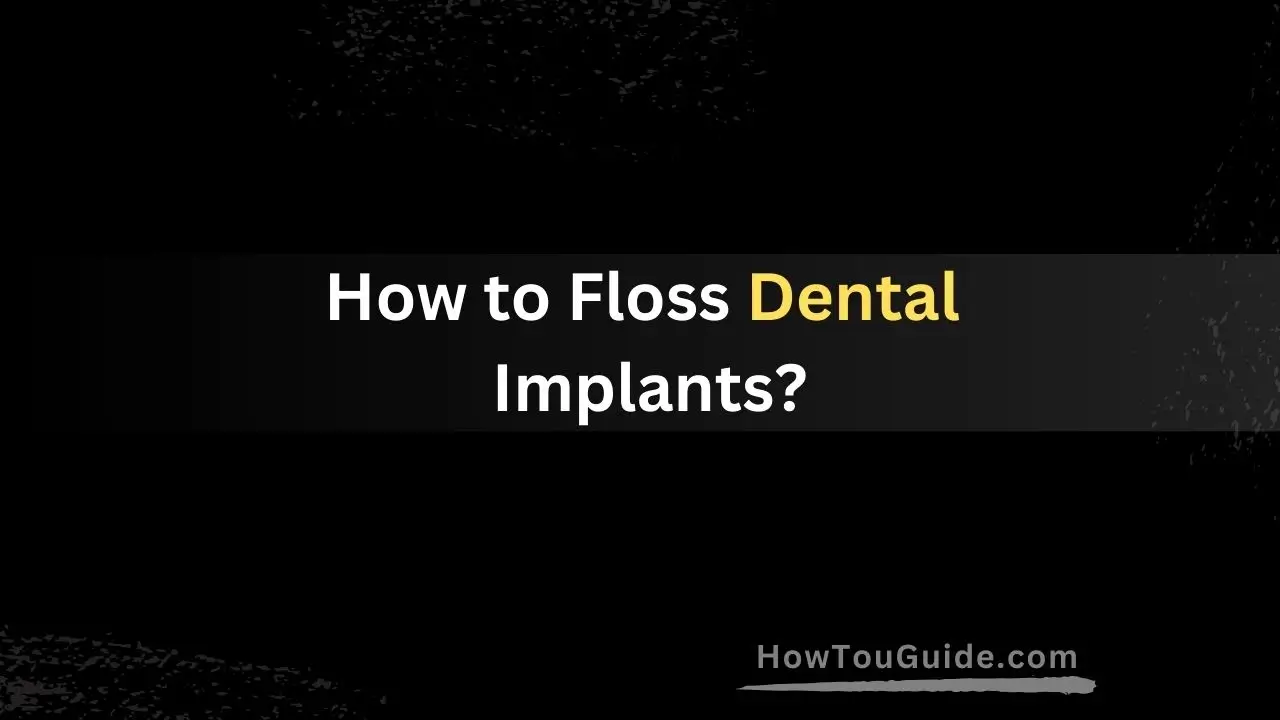How to Floss Dental Implants?
Dental implants are artificial tooth roots placed by oral surgeons to replace missing teeth. They fuse with the jawbone to provide stable support for replacement teeth like bridges, crowns, or dentures.
Proper care is vital for the longevity of implants, and flossing helps prevent plaque buildup and infection around them. This article covers everything you need to know about effectively flossing dental implants.
Supplies Needed for Flossing Dental Implants
Flossing dental implants requires some specialized tools to reach between them and under restorations:
Interdental Brushes
Small, soft bristle brushes fit perfectly between implants and natural teeth. They come in various widths. Choose sizes that slide through the gaps without force.
Read More : How to Do a Salt Covenant?
Floss Threaders
These flexible plastic loops allow you to thread floss under bridges, through narrow spaces, and around implant restorations.
Extra-Soft Floss or Tape
Regular floss can shred, while extra-soft options easily slide around restorations. Some brands make wider tape for wider spaces.
Technique for Flossing Dental Implants
The method depends on your specific implant placement and attachments:
Flossing Between Multiple Implants
For two or more adjacent implants, guide floss back and forth with a gentle up-down motion along each side to dislodge plaque.
Flossing Implants with Restorations
To get under bridges, crowns, or denture bars attached to implants, thread floss through using a threader and floss around them.
Using Floss Threaders
When space is too narrow between implants for even small brushes, thread soft floss underneath and gently rub side-to-side.
When to Floss Dental Implants
As with natural teeth, developing consistent daily flossing habits ensures gum health:
Daily Flossing Routine
Floss implant areas thoroughly at least once per day, ideally at night. Make it part of your regular oral hygiene regimen.
Before and After Meals
Additionally, quick flossing after eating clears debris from implant attachments. Keep floss at work or on-the-go.
Proper Care for Dental Implants
A full cleaning regimen prevents complications:
Brushing Implants
Use a soft-bristle or electric toothbrush twice per day. Avoid excessive pressure and directional scrubbing.
Using Mouthwash
Mouthwash reaches areas a toothbrush cannot. Select options without alcohol that help prevent gum disease.
Regular Dental Cleanings
Even with diligent at-home care, calculus and tartar accumulates. Professional cleanings ensure implants last.
Conclusion
Flossing daily and properly caring for dental implants is crucial to avoid complications like infections, swelling, and implant failure requiring replacement. Be gentle, use specialized tools, and develop consistent flossing habits.
With some patience and practice, flossing implants can become an easy addition to oral hygiene routines. Maintaining implants well means they can comfortably function for decades.
FAQs
What is the easiest way to floss between dental implants?
Using small interdental brushes is simpler than maneuvering floss. They automatically reach between tight spaces.
How often should you floss around dental implants?
Floss thoroughly once daily as part of your nightly oral hygiene regimen. Additionally, floss quickly after meals if possible.
Does floss damage dental implants?
With care and using ultra-soft options meant for wider spaces, floss does not damage implant connections or restorations. Just avoid forceful scraping motions.
Is water flossing as effective as string floss?
Water flossing should not replace daily string flossing between implants as it does not fully remove plaque and debris. Use water flossing as a supplementary aid several times per week.
What are signs of dental implant infection to watch for?
Red, swollen, bleeding gums, persistent halitosis, pain or sensitivity from implants, pus around sites, loose implant teeth, and altered taste are all causes for concern to promptly see your dentist.






